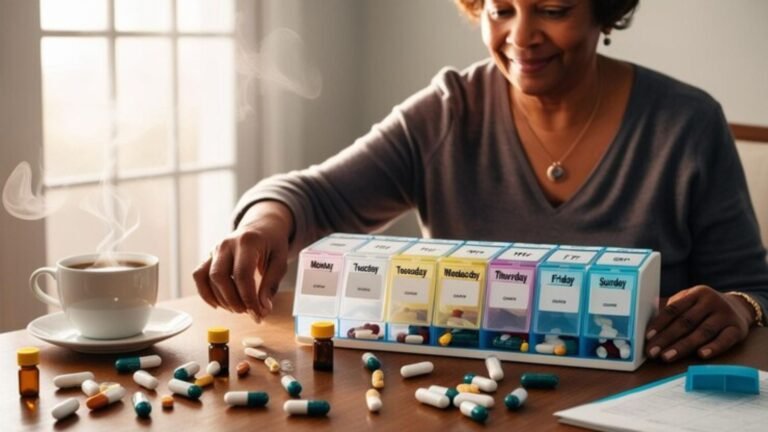Naltrexone is a medication primarily used in the treatment of opioid addiction and alcohol dependence. Understanding its optimal dosage is crucial for maximizing its effectiveness while minimizing potential side effects. In this article, we’ll focus on the 4.50mg dosage of Naltrexone, exploring its benefits, uses, and key considerations.
What is Naltrexone?
Naltrexone is an opioid antagonist used to manage alcohol and opioid dependence. It works by blocking opioid receptors in the brain, reducing cravings and preventing the effects of opioid drugs. This can help individuals maintain sobriety and avoid relapse.
Why 4.50mg?
The standard dosage of Naltrexone for alcohol dependence is typically 50mg per day. However, lower doses such as 4.50mg may be used for specific purposes, including:
Personalized Treatment Plans: Tailoring dosage to individual needs can enhance effectiveness and reduce side effects.
Research Purposes: Lower doses are often used in clinical studies to understand their impact on various conditions.
Sensitivity and Tolerance: Some individuals may be more sensitive to the medication and benefit from lower doses.
Benefits of Naltrexone 4.50mg
Reduced Cravings
At lower doses, Naltrexone can help reduce cravings for alcohol or opioids, making it easier for individuals to adhere to their treatment plans. This can be particularly beneficial for those who are highly sensitive to the medication’s effects.
Fewer Side Effects
Lower doses of Naltrexone are often associated with fewer side effects. Common side effects of Naltrexone include nausea, headaches, and fatigue. By starting with a lower dose, patients may experience a milder onset of these effects, improving overall tolerance.
Enhanced Tolerance
Some individuals may experience better tolerance with a 4.50mg dose. This can be advantageous for those who are just beginning their treatment journey or who have experienced adverse reactions to higher doses.
Uses of Naltrexone 4.50mg
Alcohol Dependence
Naltrexone is often prescribed to help individuals reduce or eliminate alcohol consumption. The 4.50mg dose may be used as part of a personalized approach to manage cravings and support long-term recovery.
Opioid Dependence
For those recovering from opioid addiction, Naltrexone helps to prevent relapse by blocking opioid receptors. While the standard dose is higher, a 4.50mg dose may be considered for individuals who are particularly sensitive or are being gradually adjusted to the medication.
Research and Clinical Trials
In clinical settings, lower doses like 4.50mg are used to explore various effects and benefits of Naltrexone. These studies can provide valuable insights into its effectiveness and safety profile.
How to Take Naltrexone 4.50mg
Following Your Doctor’s Instructions
Always adhere to the dosage prescribed by your healthcare provider. Self-adjusting the dose can lead to ineffective treatment or unwanted side effects.
Timing and Consistency
Taking Naltrexone at the same time each day helps maintain consistent levels in your system. This consistency is key to maximizing the medication’s benefits.
Avoiding Alcohol and Opioids
For Naltrexone to be effective, it is crucial to avoid alcohol and opioid use. This ensures that the medication can work as intended and helps prevent any potential interactions or side effects.
Potential Side Effects
While Naltrexone is generally well-tolerated, side effects can occur. Common side effects include:
Nausea
Headaches
Fatigue
Dizziness
Less common but more serious side effects might include liver damage or allergic reactions. It’s important to report any unusual symptoms to your healthcare provider promptly.
Monitoring and Adjustments
Regular follow-up appointments with your healthcare provider are essential for monitoring your response to Naltrexone. Dosage adjustments may be necessary based on your progress and any side effects experienced.
Conclusion
The 4.50mg dosage of Naltrexone offers a tailored approach to managing alcohol and opioid dependence. By understanding its benefits, uses, and potential side effects, patients and healthcare providers can work together to optimize treatment. Whether used for personal treatment plans or in clinical research, this dosage represents a valuable option in the broader landscape of addiction management.
ALSO READ:Blog TheHealthyPrimate.org: Insights for a Healthier Lifestyle
FAQs
What is the standard dosage of Naltrexone?
The standard dosage for alcohol dependence is typically 50mg per day. For opioid dependence, dosing can vary based on individual needs.
Can I take Naltrexone with other medications?
Always consult with your healthcare provider before combining Naltrexone with other medications. They will help ensure there are no harmful interactions.
How long does it take for Naltrexone to start working?
Naltrexone may take several days to weeks to show its full effects. It’s important to follow your treatment plan and be patient during this period.
Are there any long-term effects of taking Naltrexone?
Long-term use of Naltrexone is generally considered safe, but it’s crucial to have regular check-ups with your healthcare provider to monitor for any potential issues.
What should I do if I miss a dose?
If you miss a dose of Naltrexone, take it as soon as you remember. If it’s almost time for your next dose, skip the missed dose and continue with your regular schedule. Do not double up to make up for a missed dose.

